Did you know that non-melanoma skin cancer is the most commonly occurring cancer in the world? An estimated one in five Americans will get skin cancer in their lifetime. Every year more and more studies prove that there’s a direct correlation between skin cancer and sun exposure, and, although genetics and skin color do play a role, everyone is susceptible to developing skin cancer.
Early detection is the best way to prevent skin cancer from becoming disfiguring or life threatening, which is why it is important to know what to look out for on your body and to get your skin examined by a board certified dermatologist.
Here’s a breakdown of the different types of skin cancer — and how to identify them.
Basal Cell Carcinoma (BCC)
BCC is the most common form of skin cancer, with more than 4 million new cases diagnosed in the U.S. every year. Although BCC very rarely metastasizes (meaning it doesn’t often spread), it should not be taken lightly as it can extend beyond the skin into deeper structures and can cause disfigurement.
BCCs are skin cancers that develop in our body’s basal cells, a type of skin cell found in the deepest layer of the epidermis. They appear as shiny, pink, or flesh colored growths — or as patches of skin that sometimes look like pimples or scars. They’re most commonly caused by exposure to the sun over a person’s lifetime.
Other examples of Basal Cell Carcinoma (BCC):
Squamous Cell Carcinoma (SCC)
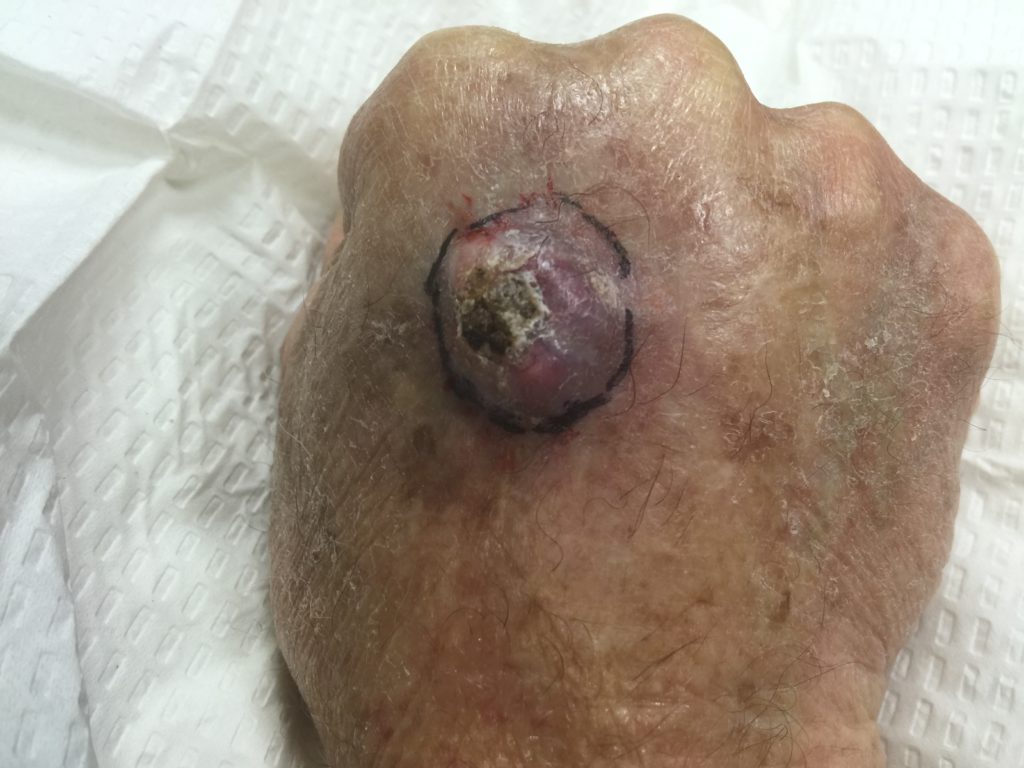 SCC is the second most common type of skin cancer. Although it’s usually slow growing, SCC can spread to other parts of the body — most commonly our lymph nodes, lungs, and bones. If they’re found early, SCCs are easy to treat, but if they’re left to grow they can become life threatening.
SCC is the second most common type of skin cancer. Although it’s usually slow growing, SCC can spread to other parts of the body — most commonly our lymph nodes, lungs, and bones. If they’re found early, SCCs are easy to treat, but if they’re left to grow they can become life threatening.
SCCs usually appear as firm red bumps or scaly patches of skin. Unlike BCC’s, they are usually tender to the touch. They tend to form on areas of skin that are frequently exposed to the sun, such as the face, arms, ears, and neck.
Other examples of Squamous Cell Carcinoma (SCC):
Treating Basal Cell and Squamous Cell Carcinomas
Both BCC’s and SCC’s can bleed easily, become crusty, and will fail to heal like normal skin. They will occasionally ooze straw-colored or blood tinged fluid.
Nowadays, the most common removal method of non-melanoma skin cancers is known as Mohs micrographic surgery, wherein a trained professional removes the visible tumor and shaves off a thin layer of surrounding tissue. This tissue is then processed in a lab by being stained and put on microscope slides, where it’s then examined under a microscope. If the examiner identifies cancerous cells at the edges of the tissue, the surgeon will then remove more tissue in the area. The removed tissue is checked again until clear margins are obtained and everyone can have confidence that the cancerous cells have been entirely removed.
Before and after images of Mohs Surgery on BCCC and SCC Skin Cancer, taken by Dr. Sandra Lee, aka Dr. Pimple Popper:
Although treatment options are advancing, prevention is always better than treatment. Over 90% of non-melanoma skin cancers are caused by exposure to UV light, which is why it is so important to protect your skin from the sun.
Melanoma
This is the deadliest type of skin cancer, simply because melanoma can easily spread to other parts of the body in a short period of time. Although melanoma accounts for less than 1% of new skin cancer cases, it causes the most skin cancer deaths because it can become life threatening so quickly.
Malignant melanomas have to be removed as soon as possible in order to prevent cancerous cells from growing deeper into the skin. When the melanoma grows, it coming into contact with the tiny blood vessels and lymphatic nodes located in the epidermis. If this happens the cancer can metastasize to other parts of the body.
Recent studies have indicated a strong association between the likelihood of developing melanoma and the number of sunburns experienced, particularly during childhood. Although melanoma can occur in skin that is not exposed to the sun as often, 86% of melanomas can be attributed to sun exposure.
Identifying Skin Cancer
Knowing the ABCDE’s of skin cancer is one of the best ways to determine whether you have a growth that requires a medical examination.
Asymmetry – The two sides of the growth do not look alike.
Border – The edges of the growth are poorly defined, or irregular.
Color – The mole isn’t one consistent shade – it has different colors, which can include brown, black, red or even blue.
Diameter – Anything bigger than 6mm could be cancerous.
Evolving – The spot seems to visibly change shape, size or color over time.
If you notice any of these signs — or are simply just concerned about a new spot, mole, or growth on your skin — the best thing to do is make an appointment with your dermatologist. It certainly can’t hurt to have the spot biopsied, even if it turns out to be benign. Better safe than sorry!
While there is no denying that the sun is damaging for our skin, it is possible to protect yourself against harmful UV rays. Small lifestyle changes — such as wearing sunscreen everyday, regardless of whether you will be in direct sunlight — can reduce the possibility of developing melanoma by 50%.
Dr. Kristen Townley, a practicing dermatologist based in Montana, contributed to the accuracy of this article.



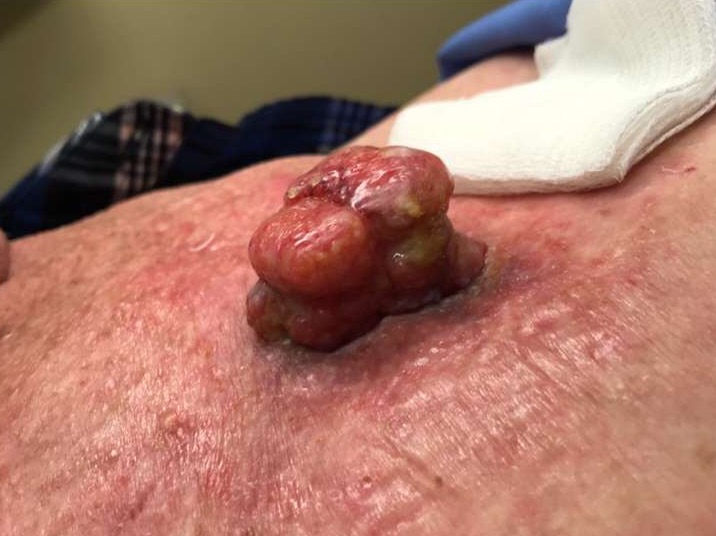
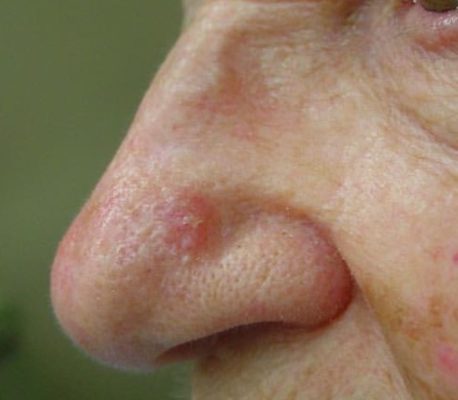
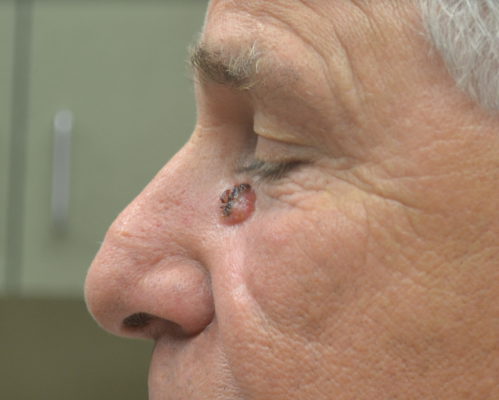
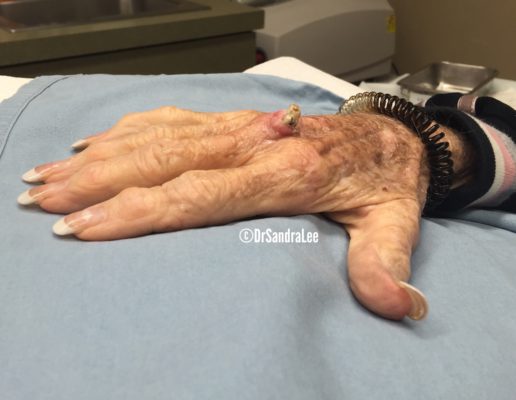
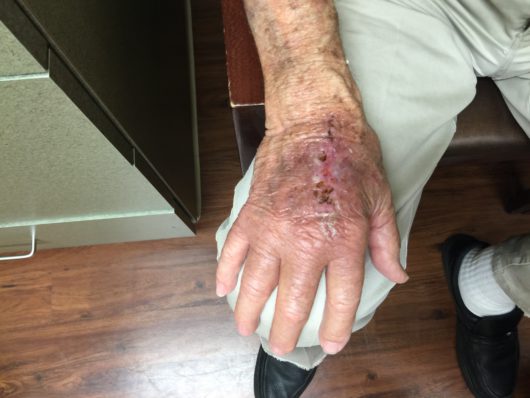
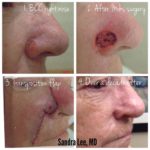

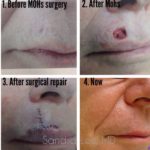
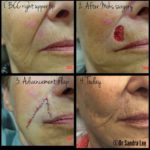
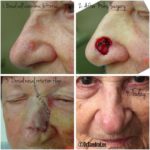
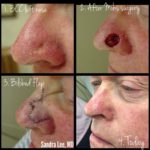
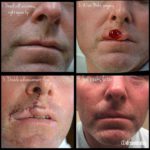

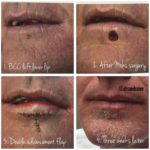

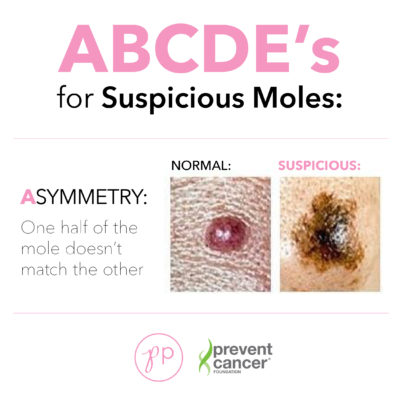
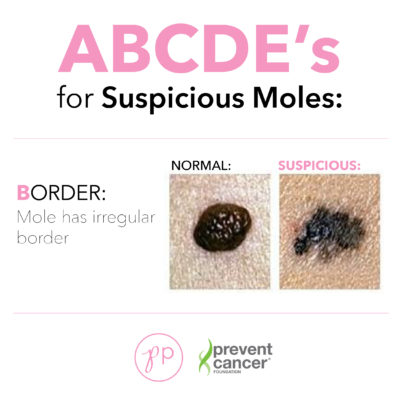
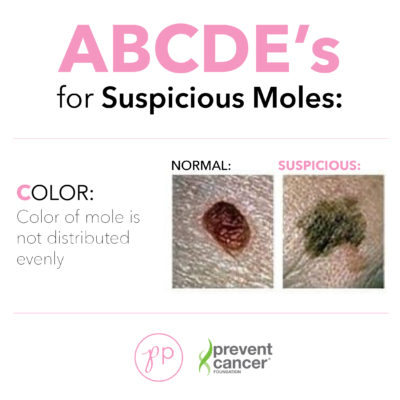
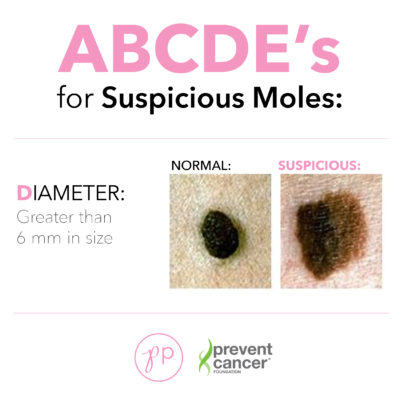
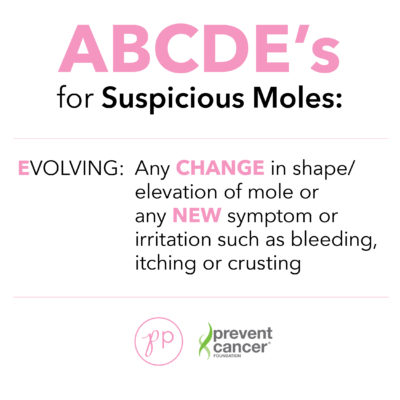


I’ve had 41 MOHs surgeries for mostly basal cell and a few squamous cell. Any thing on my face, my dermatologist schedules a time for surgery when he can remove the spot one day, then I go to the hospital outpatient, for a plastic surgeon to put me to sleep and close it. Such a pain. I wish I was closer to California so I could come to you. I am a fan of your utube pimple popper videos.
Colors for melanoma can also be pink/ whitish, which I had. I never dreamed I could that I could have melanoma with that color. I am fair skinned. Dermatologists should put up signs in their offices saying this, instead most people thinking they are dark in color.
Melanoma can be pinkish white. Please let everyone that. I had that color, never in my wildest dreams did I think it was melanoma. Please pass this on.